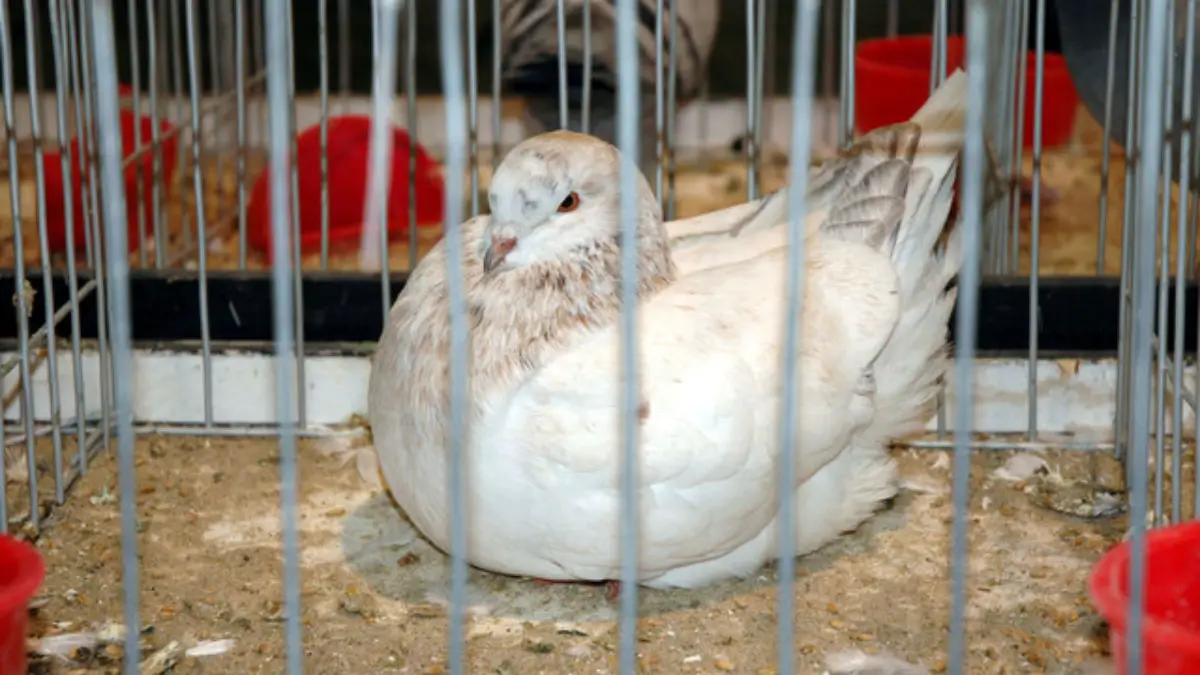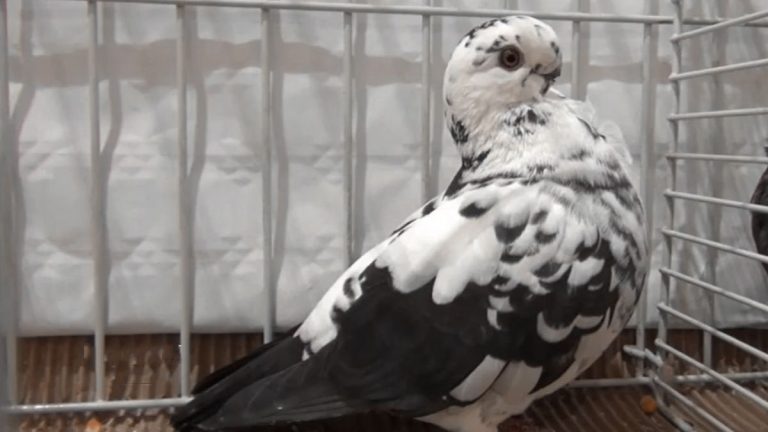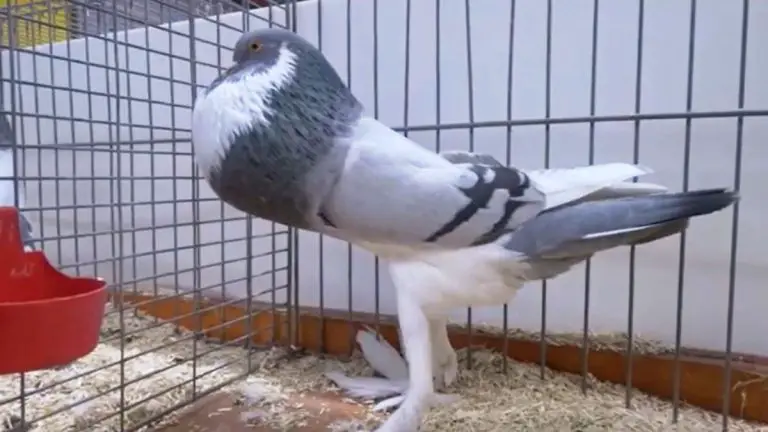Modena Pigeon: Origin, Appearance, Behavior, Care, And More
The Modena pigeon is a popular breed in pigeon shows across the globe. It’s highly valued for its uniquely soft, round, and beautiful appearance plus striking patterns and colors. As a calm and docile bird, this pigeon also makes a great companion for pigeon enthusiasts looking to keep a pigeon as a pet.
In this article, you’ll learn more interesting details about the Modena pigeon, including its origin and history, physical characteristics, behavioral and personality traits, and breeding tips. We’ll also discuss how to take care of it as a pet, including the proper diet, housing, and other helpful bird care tips.
Modena Pigeon Quick Facts:
| Scientific name | Columba livia domestica |
| Other names | None |
| Breed name | Modena |
| Origin | Italy |
| Breed purpose | Shows, exhibitions |
| Size | Medium |
| Weight | 350 grams |
| Flying ability | Good |
| Cost | $50 to $150+ |
| Lifespan | 10+ years |
Origin and history
Modena traces its origin to Italy. It gets its name from Modena in Italy—the place it was first bred around 1300 and has been breeding for centuries.
The first Modena was a small and slim performance breed.
Like the other breeds of domesticated pigeonss, the Modena is also a descendant of the rock dove (Columba livia). It is classified as a fancy pigeon breed that was developed after many years of selective breeding.
Today, the pigeon is regarded as one of the top exhibition and show breeds due to its beautiful variety of colors and body shape.
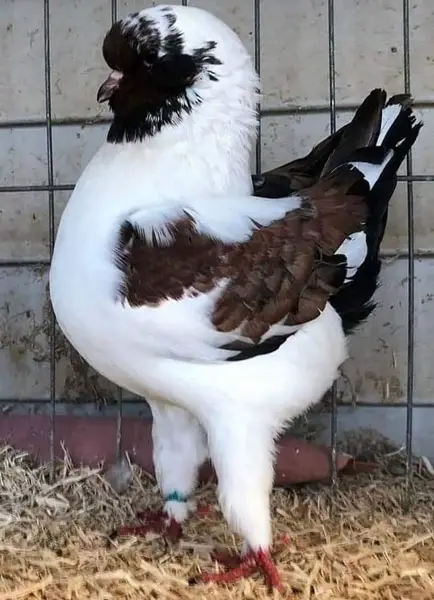
It’s important to note that the Modena pigeon has several variations. These include the German Modena, English Modena, and the Triganino Modena.
German variety has a chicken-like appearance and originates from Germany and is a result of selective breeding over many years. This bird was initially intended as a flying bird but it, later on, became an exhibition/ornamental bird.
The German Modena has a less rounded body shape than the English Modena. Its wings tilt up less and its tail isn’t as highly carried as in the English pigeons. It also features long neck and fuller breasts than English Modena.
Appearance
Modena pigeon is easily recognizable by its exquisite appearance. This average-sized bird has a striking curvy shape that gives an impression of being soft, round, and beautiful. This distinct physical characteristic makes the bird a top show bird.
With its raised wings and puffs out its chest, and high carried tail, this bird presents such a striking appearance that’s not only odd but also lovely.
This pigeon also features a well-rounded head that’s evenly arched with smooth forehead. The color of its eyes can vary from dark color to orange-red or light color. The beak is strong and medium length
It also has a harmonious neck with its throat cutting out. Its base feathers appear fluffy while the rest appear flat and smooth. Its wings are short.
Modena’s tail is short and closed while its legs are folded and strong. Note that the feet are bare and not feathered like in some other pigeon breeds.
Keep in mind that color variation is also present in Modena pigeons, with the two main colorations being Ghazi and Schietti.
The former is pied and features the ghazi color on its head, throat, tail, and even wings while the rest of the body is white. The Schietti-colored varieties are non-pied.
Here’s a video giving you a good view of various colorations and markings in Modena pigeons.
Video:
Behavior
This pigeon breed is calm and peaceful in nature, but if you put it in unfavorable conditions, it may show signs of aggression.
Don’t forget that Modena pigeons are also social birds and will happily live in groups. They also have no issues mixing with other breeds of pigeons in your loft or outdoor aviary.
Communication between the birds usually occurs through body language and sounds such as cooing, puffing out the chest, bowing, etc.
However, the birds may become aggressive when protecting their nesting or young ones. But they’re generally not aggressive toward humans or any other animals.

Diet
Modena pigeons love seeds and grains and you can make them a good quality mix using wheat, corn, barley, milo, dun or pigeon pears, etc.
Additionally, you should add variety to your bird’s diet by providing it with greens such as spinach, dandelion greens, etc.
Grit is also essential to aid with digestion as well as present your pigeon with essential minerals.
Fresh fruits can also be added to their diet occasionally as a treat to increase their food variety.
Your Modena pigeons will also require a supply of clean, fresh water daily as part of their diet.
Habitat
The perfect habitat for your pigeons should be spacious enough to enable them to stretch their wings and move around. We recommend a housing that gives each bird about 2-4 cubic feet of space.
A good enclosure should also protect these birds from predators and harsh weather elements.

Make sure the loft or aviary is well-ventilated and free of drafts. Be sure to clean it regularly to prevent disease and parasites from getting to your birds and making them sick.
As we mentioned earlier on, Modena pigeons breed are generally social birds, so you can mix pair them up or mix them with other birds in their lofts or aviaries.
Modena pigeons as pets
Modena pigeons are also kept as pets due to their friendly and sociable nature. Plus, their striking appearance is another reason to consider them for pets.
However, if you plan to get a Modena pigeon pet, then you should be committed to taking good care of this bird to keep it happy and healthy.
Provide the bird with a nutritious diet, clean and fresh water, and suitable housing with plenty of space. Regular cleaning of the house is recommended to keep your birds healthy.
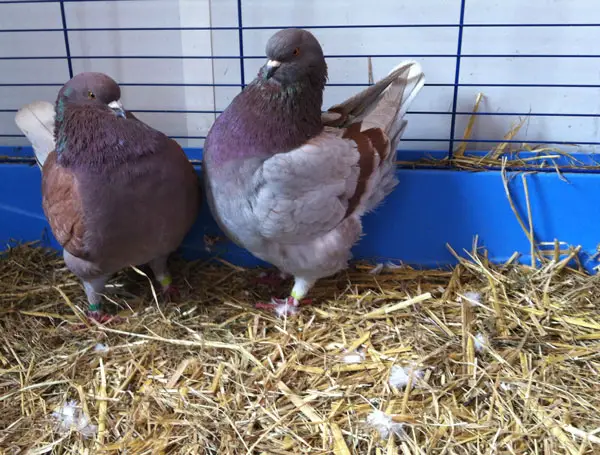
You’ll also need to get an avian vet to regularly examine your pigeons to ensure they’re free of health issues that can reduce the quality of their life.
If keeping a pair for breeding purposes, be sure to provide them with a suitable nesting box as well as plenty of space.
The birds are suitable for beginner bird owners as they don’t require a lot of effort to maintain. They lack physical extremities like feathered feet, hoods, etc., which usually require a lot of maintenance work.
The birds can also take care of their young ones, making your work even easier.
Breeding
The breeding process for Modena pigeons is pretty easy, just as in other breeds. For the pigeons to breed, they must be in a pair—i.e. a male and a female.
A female Modena pigeon typically lays 2 eggs per clutch which usually hatch into a male and a female offspring. This breed also makes reliable parents and they’ll work hard to rear and feed their squabs after they get hatched.
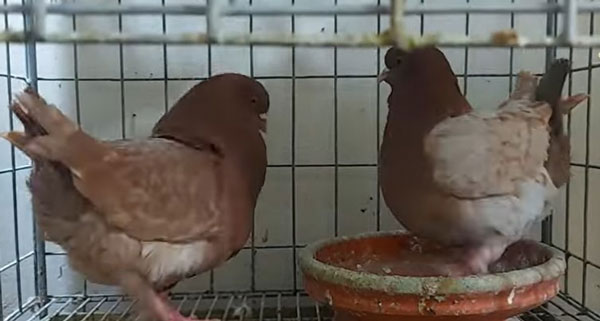
The parents will spend several weeks feeding the offspring the special crop milk and caring for them until they’re able to leave the nest and survive on their own.
However, this pigeon is a stockier breed of domesticated pigeons, and it may experience fertility issues.
Price
The Modena pigeon can cost as low as $50 to upward of several hundred dollars. However, the exact price can vary from individual to individual depending on a variety of factors such as breed quality, breeder, and location.
Lifespan
Modena pigeon’s average life expectancy is around 10 years, though some individuals can live for even longer.
The lifespan generally depends on the factors and conditions of its breeding as well as the overall care the bird gets.
If you provide your bird with a healthy diet, keep it in suitable housing, and regulate vet checkups, you can help it live longer.
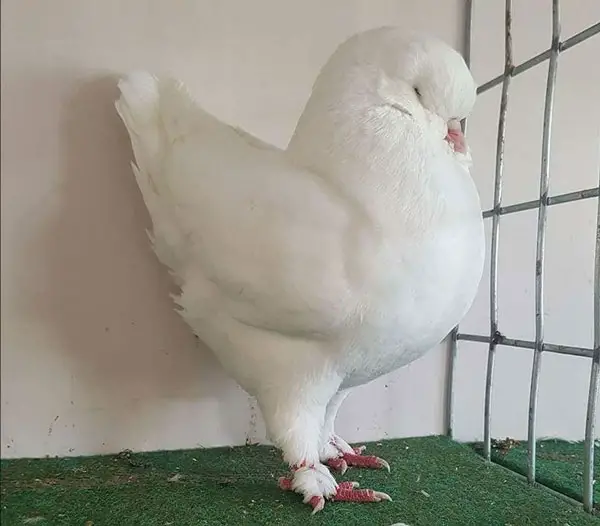
Final Verdict
Modena pigeons originated from Modena town in Italy many years ago and are currently one of the most popular show/exhibition birds. Their unique appearance makes them a beauty to behold and qualifies them for bird shows across the planet. Since these pigeons are generally calm and docile, they also make great pets. They’re quite social and you can keep them in pairs or groups without any conflicts. They will also enjoy your interactions, and even develop a close friendship with you. Just make sure you take good care of your Modena pigeons pet by providing them with a healthy diet, clean and fresh water, a hygienic living space, and regular checkups by a vet.
